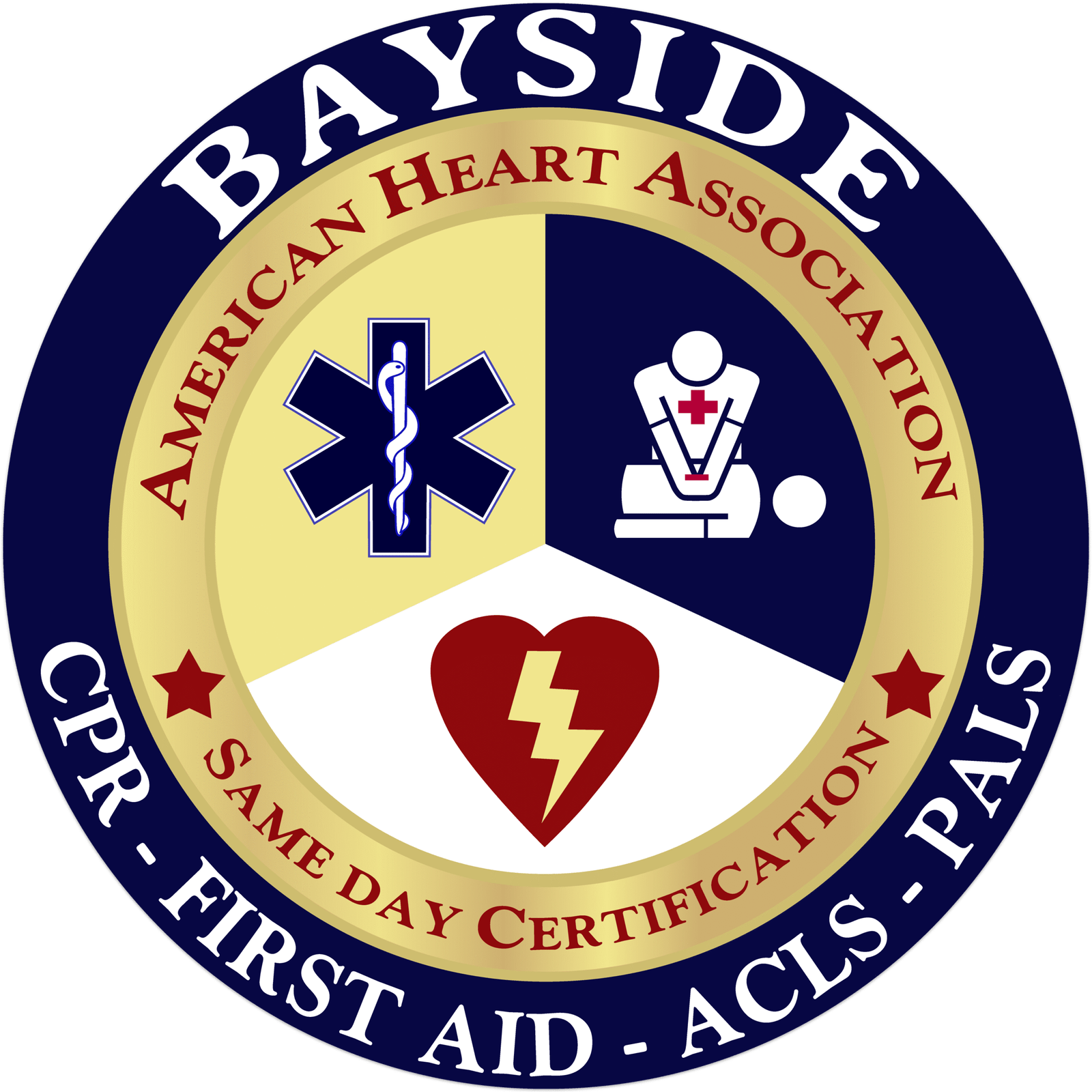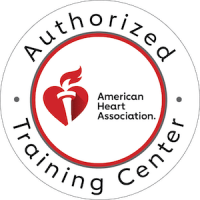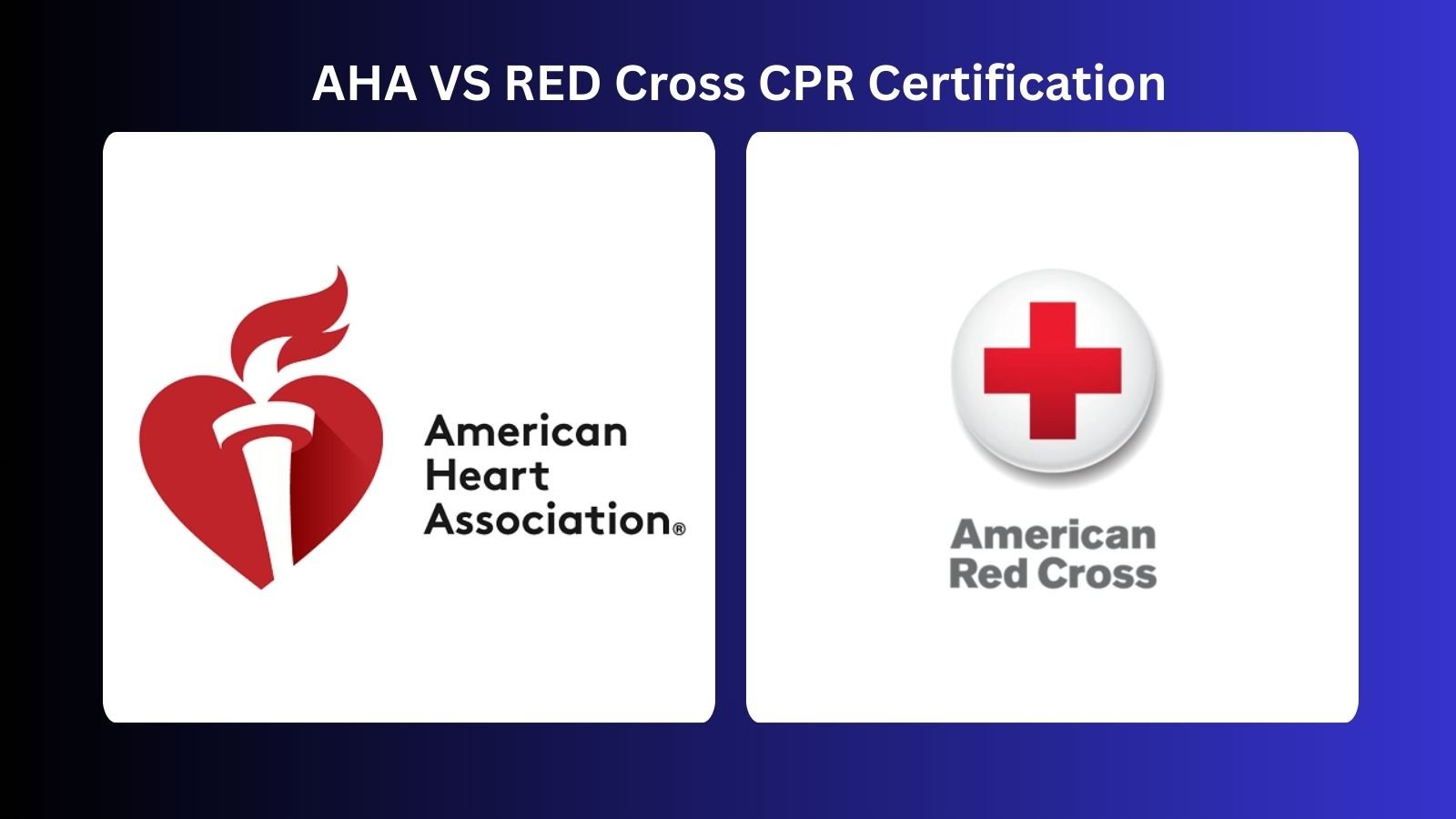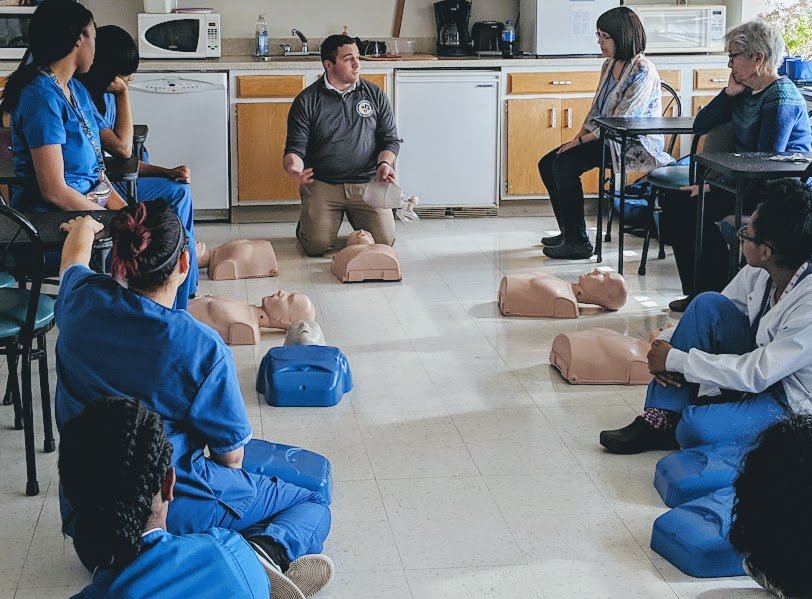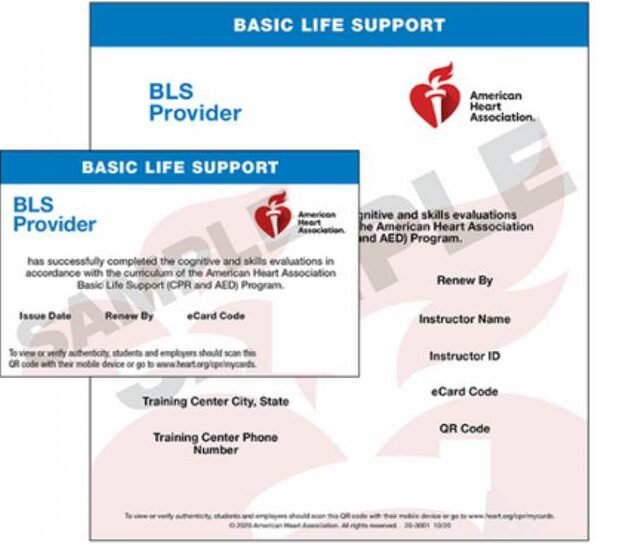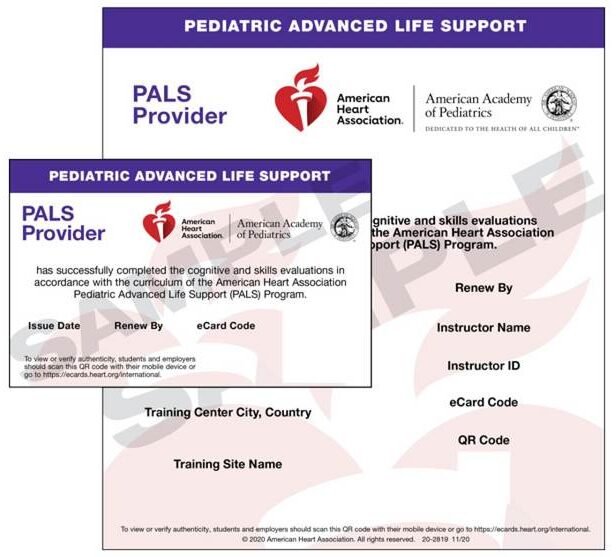When it comes to learning lifesaving skills, both the AHA (American Heart Association) and the AHA (American Red Cross) stand out as trusted leaders. But have you ever wondered how their missions and contributions differ? CPR training, which stands for cardiopulmonary resuscitation, is a vital skill that can make the difference between life and death in emergencies. It involves techniques to keep blood and oxygen flowing when someone’s heart stops beating. Knowing CPR is crucial because emergencies can happen anywhere, at home, work, or in public, and being prepared can save a life. Either you are non- medical, healthcare provider, medical student , sport coaches, parents it is so helpful training. Let’s dive into how these organizations approach CPR education and why their work is so essential.
Importance Of CPR Certification
Getting CPR certified is more than just checking a box; it’s about being ready to step in and make a real difference when it matters most. Imagine witnessing someone suddenly collapse or showing signs of a heart attack, having CPR training gives you the confidence and skills to act quickly, potentially saving a life. It’s a strong way to equip yourself with the know-how to keep someone alive until professional help arrives. Plus, being certified shows you’re committed to safety and helping others in their moments of greatest need. CPR certification is one of the most valuable tools you can have, either it’s from AHA or ARC .
The American Heart Association (AHA) CPR Certification
The American Heart Association CPR certification is widely recognized and respected for its thorough and up-to-date training programs. When you choose AHA, you’re learning from experts who focus on delivering effective, practical skills that can truly save lives. Their courses are designed to be engaging and easy to understand, whether you’re a healthcare professional or a concerned everyday citizen. By completing an AHA CPR certification, you gain confidence in your ability to respond quickly and correctly during emergencies. It’s more than just a certificate; it’s a powerful tool that prepares you to act with purpose and calmness when someone needs help most. The six cardiologists who founded the AHA in 1924 would be amazed. From humble beginnings, the AHA has grown into the nation’s oldest and largest voluntary organization dedicated to fighting heart disease and stroke.
The American Red Cross (ARC) CPR Certification
The American Red Cross CPR certification is well-respected and widely recognized for its practical approach to emergency training. When you earn this certification, you’re gaining skills that can genuinely make a difference in critical moments. The ARC focuses on hands-on practice, making sure you feel confident enough to respond calmly and effectively during an emergency. ARC provides First Aid courses that are designed to be accessible and engaging, helping people of all backgrounds learn essential life-saving techniques. Whether you’re a healthcare worker, a teacher, or just someone who wants to be prepared, Red Cross CPR training arms you with the knowledge you need to step up when it counts most. It was established in 1881. While CPR training wasn’t a core part of its initial mission, it has become a significant part of its training programs over time, starting in the early 20th century. The Red Cross offers various CPR certifications, including BLS, ALS, and PALS.
1. Teaching Methodologies
Both organizations want to help people feel confident and skilled, but they teach in ways that suit diverse learning styles.
I. The AHA
The American Heart Association focuses heavily on evidence-based techniques, blending textbook knowledge with realistic simulations and hands-on practice to ensure learners feel prepared. Their courses often focus on real-life situations, helping students learn to respond quickly and effectively during emergencies.
II. The ARC
The American Red Cross takes a more accessible and interactive approach, combining practical demonstrations with group discussions and real-life examples. They prioritize engaging learners through interactive exercises that make complex skills easier to learn and remember.
2. Course Content & Structure
Both organizations aim to empower individuals with the knowledge and skills needed to save lives, but each has its unique course content and structure.
I. The AHA
The American Heart Association (AHA) offers a comprehensive range of courses focused on CPR, AED, and first aid training. Their course content is designed to be both informative and practical, with clear step-by-step instructions and real-life simulations. The structure typically includes online pre-training modules, hands-on practice sessions, and skills assessments, making it easy for participants to learn and retain lifesaving skills. The courses are flexible and often tailored for different audiences, whether healthcare providers or lay rescuers, ensuring everyone gets the appropriate level of training. The AHA provides a comprehensive selection of life support courses, including:
1. Advanced Cardiovascular Life Support (ACLS)
ACLS courses are intended for healthcare professionals and emphasize advanced interventions for managing cardiovascular emergencies.
2. Basic Life Support (BLS)
BLS courses provide training in essential life support techniques for use in both healthcare facilities and emergency scenes, focusing on delivering high-quality CPR and effective team coordination.
3. Pediatric Advanced Life Support (PALS)
PALS courses concentrate on advanced life support techniques specifically for infants and children.
4. First & CPR Course
This course is intended for the general public and covers Hands-Only CPR, how to use an AED, and techniques for relieving choking.
5. Heart-saver Bloodborne Pathogen
This course teaches employees how to protect themselves from exposure to bloodborne diseases on the job.
II. The ARC
The American Red Cross provides well-organized courses that emphasize practical emergency response skills. Their curriculum covers CPR, first aid, and emergency preparedness, structured to be engaging and accessible. Red Cross courses usually blend online learning with in-person practice to reinforce techniques through realistic scenarios. The structure encourages active participation and ensures learners are confident in their abilities to respond during emergencies. Both organizations aim to empower individuals with the knowledge and skills needed to save lives, but each has its unique approach to delivering impactful training. The ARC offers a diverse array of life support training programs, such as:
1. Advanced Cardiovascular Life Support (ACLS)
ACLS courses are customized for medical professionals and focus on advanced techniques for responding to cardiovascular crises.
2. Basic Life Support (BLS)
BLS courses train individuals in real-life support skills applicable in both clinical and emergency settings, with an emphasis on high-quality CPR and strong team collaboration.
3. Pediatric Advanced Life Support (PALS)
PALS courses focus on advanced life-saving interventions tailored to the unique requirements of infants and pediatric patients.
4. First & CPR Course
CPR and First Aid course is created for laypersons and teaches Hands-Only CPR, AED operation, and methods for choking relief.
5. Heart-saver Bloodborne Pathogen
This course trains employees on how to prevent exposure to bloodborne pathogens in the workplace.
3. Cost Of The Course
Both organizations aim to make their training available, so whether you choose the AHA or ARC, you’ll find options that fit different budgets while still delivering impactful education.
I. The AHA
The American Heart Association tends to be a bit more expensive, mainly due to its strong emphasis on healthcare-provider-level training and its wide acceptance in medical and clinical settings. AHA courses may also have separate fees for materials like manuals or certification cards, which can add to the total cost.
II. The ARC
The American Red Cross is generally considered the more affordable option. ARC provides lower base prices, especially for blended learning (part online, part in-person) formats, and they frequently run promotions or discounts through local chapters.
4. Acceptance and Recognition
The AHA and ARC certifications are accepted and respected worldwide. Both organizations focus on promoting health, safety, and life-saving practices.
I. The AHA
The American Heart Association recognizes a new scientific breakthrough or advances in cardiovascular care, and it quickly accepts and validates those findings, ensuring people get the best possible treatment. Their endorsement is widely respected, and they continuously work to raise awareness about preventing heart disease through campaigns and community programs. Most of the hospitals and healthcare facilities prefer AHA Basic Life Support certification because it emphasizes evidence-based clinical education, ensuring that medical professionals are well-equipped to respond effectively in emergencies.
II. The ARC
The American Red Cross is known for its quick, hands-on approach to disaster response, blood donation, and emergency preparedness. When the ARC recognizes a need, whether it’s a new safety protocol or an important contribution, they don’t hesitate to accept and implement it. Their recognition often leads to widespread adoption of best practices, helping save lives in crises. The ARC’s commitment to helping others shines through in the way they actively acknowledge and incorporate new ideas and standards to better serve communities in need.
5. Target Audience
Understanding the target audience is essential to effectively promoting and implementing the initiatives of organizations like the AHA and ARC. Their courses are customized to reach the right people to maximize impact and save lives.
I. The AHA
The American Heart Association primarily targets healthcare professionals, such as doctors, nurses, and paramedics, who need the latest knowledge and skills to save lives. They also reach out to educators, students, and the general public to spread awareness about heart health and prevention. The AHA aims to empower anyone interested in enhancing their understanding of cardiovascular care, making sure their messages and CPR certifications are accessible and easy to understand for all ages and backgrounds.
II. The ARC
The American Red Cross focuses on a broader audience, including everyday individuals, community members, and volunteers who want to be prepared for emergencies. They seek to help anyone who wants to learn life-saving skills like first aid, CPR, and disaster preparedness. The ARC makes their training programs engaging and understandable so that people from all walks of life feel confident in responding quickly when someone needs help in an emergency.
6. Certification Validity Period
Understanding the validity time of certifications is crucial to ensure that skills and knowledge remain up-to-date. Both the AHA and ARC set specific time frames for how long their certifications remain active.
I. The AHA
The AHA typically grants certification validity for two years. After this period, individuals need to renew their certification to stay current with the latest guidelines and practices. If you ever misplace your proof of training, you can also learn how to replace a lost American Heart Association (AHA) CPR card.
II. The ARC
The ARC also offers certifications that generally remain valid for two years. To maintain their credentials, individuals are encouraged to complete refresher courses before the expiration date
Comparison of the American Heart Association and the American Red Cross
| Terms | AHA | ARC |
| 1. Teaching Methodologies | Evidence-based techniques, hands-on practice | Interactive, practical demonstrations |
| 2. Cost Of The Course | More expensive, includes fees for materials and certification | More affordable, often with discounts and blended learning options |
| 3. Acceptance and Recognition | Widely recognized and respected, especially in healthcare and hospitals | Widely recognized, with a strong community and disaster response reputation |
| 4. Target Audience | Healthcare professionals, educators, students, general public | A broader audience, including community members, volunteers, and everyday individuals |
| 5. Certification Validity Period | Usually 2 years, requiring renewal | Usually 2 years, with recommendations for refresher courses |
Choosing Between AHA and ARC: Which Is Better?
In summary, both the American Heart Association (AHA) and the American Red Cross (ARC) are highly reputable organizations dedicated to lifesaving education, each with its unique strengths. The AHA emphasizes evidence-based, clinical-focused training with a broad range of courses tailored for healthcare professionals and the general public alike. In contrast, the ARC adopts a more interactive, accessible approach, making emergency response skills engaging and suitable for a diverse audience. While both certifications are widely accepted and valid for two years, choosing between them often depends on individual needs, target audience, and budget considerations. For those interested in comprehensive lifesaving training, Bayside CPR offers BLS, ACLS, PALS, CPR and First Aid. Group training options and non-health care provider classes are also available. Contact us for more details or visit our training centre to enhance your emergency response skills and gain confidence in life-saving techniques.
